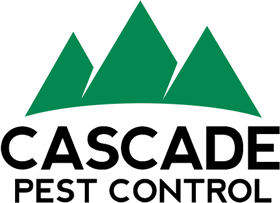Author: Kurt Treftz, Cascade Pest Control
In Eric Carle’s beloved children’s classic, The Very Hungry Caterpillar, a bright green voracious main character eats its way through a week of days, adding exponentially to its diet each day. The result is a very full caterpillar and eventually a beautiful butterfly.
Unfortunately, there is a very hungry caterpillar threatening the United States and leaving us with a not-so-happy ending. Upwards of 20 states have serious Gypsy Moth infestations on their hands and Washington state has been fighting off this pest for decades.
Where did the Gypsy Moth come from?
There are two types of Gypsy Moths causing concern. The Asian Gypsy Moth (AGM) and the European Gypsy Moth (EGM).
European Gypsy Moths have been in the United States since the 1860s, but they continue to raise concerns throughout the eastern United States. Initially, EGM were introduced to the United States from Europe to study their silk manufacturing abilities. Unfortunately, their silk skills were not found fruitful, but they were here to stay.
Asian Gypsy Moths are a more recent infestation, but a bigger concern to Washington. AGM were first detected in 1991 likely from container ships from Russia inadvertently carrying egg masses in their cargo. But regardless of which species we are talking about, both of them are wreaking havoc.
How do you identify a Gypsy Moth?
It is very important to know what you are dealing with so you can stop Gypsy Moths AND report them. Most state governments are working to reduce this pest and manage any infestations, so they want to know where they are found.
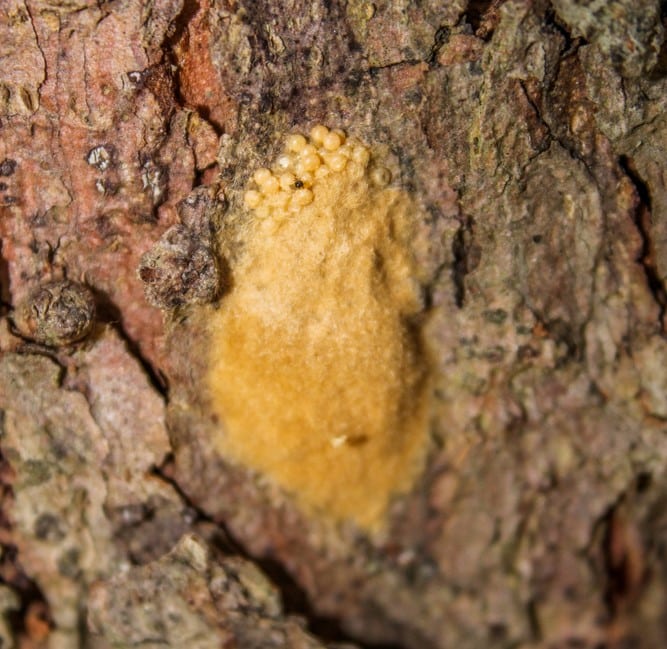
The Gypsy Moth Egg: a buff colored sac, covered with yellowish fuzz, 3.8 cm long x 1.9 cm wide, holds up to 1200 eggs
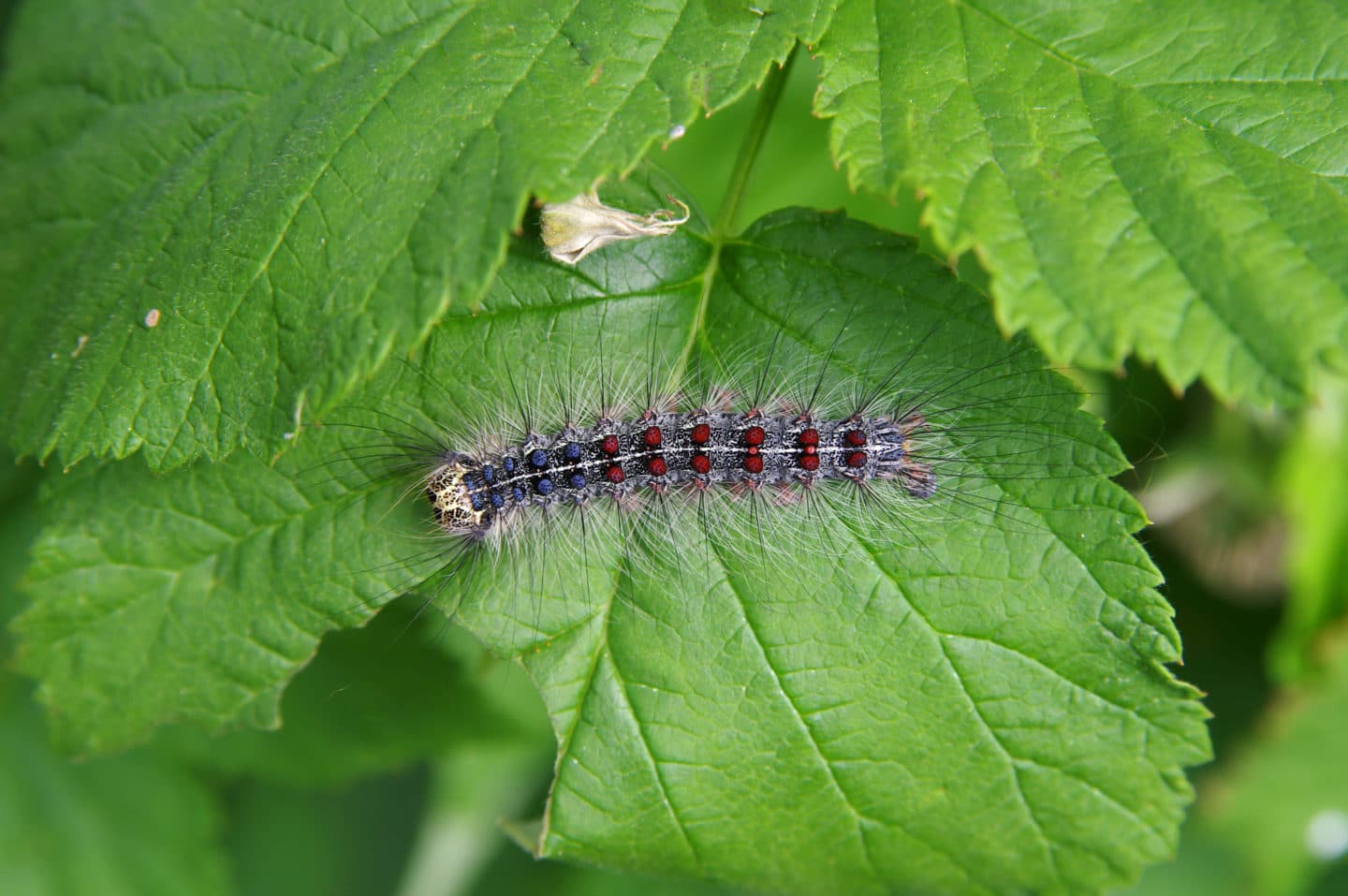
The Gypsy Moth Caterpillar: Two inches long, very hairy, gray & yellow bodies, distinctive color dots (warts) on their back (typically five pairs of blue dots and six pair of red)
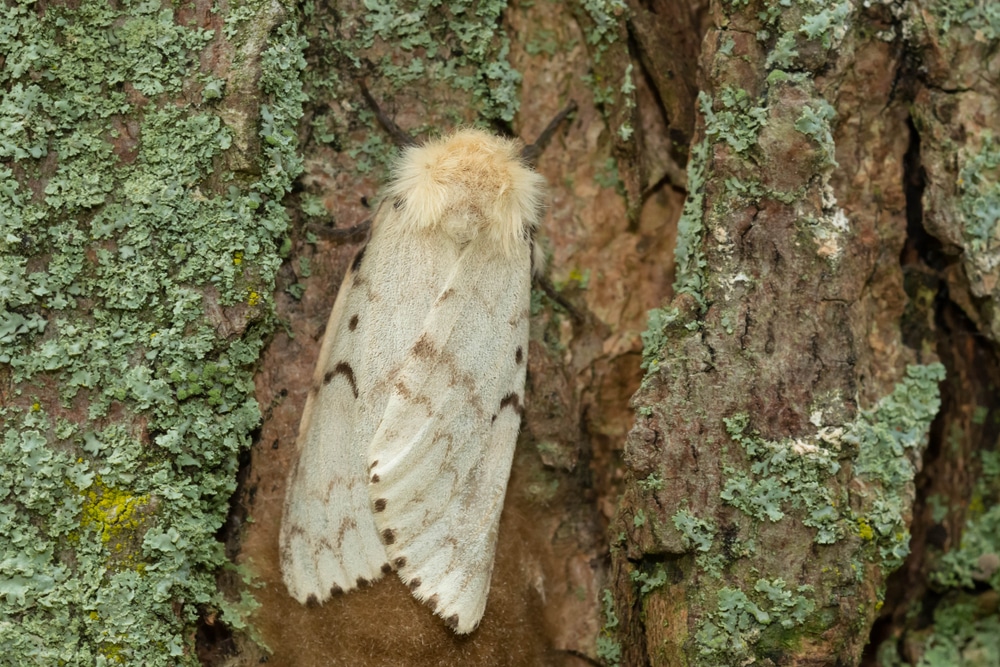
The Gypsy Moth: females – 8.9cm, white with gray markings
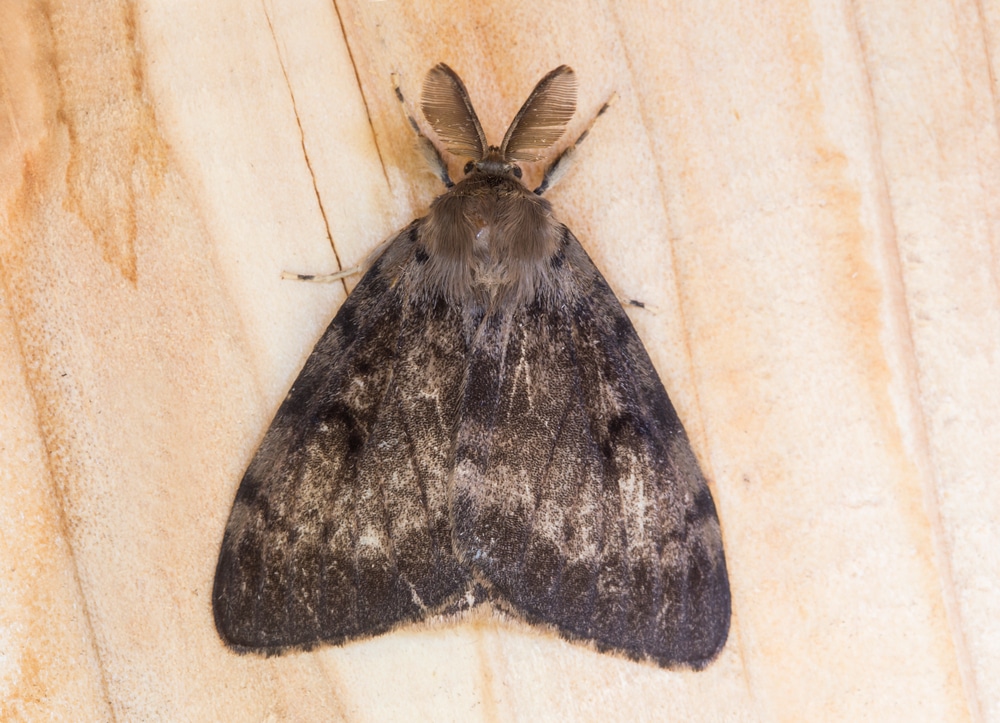
The Gypsy Moth: male – 3.8cm, gray and brown markings
- European Gypsy Moth: They don’t fly so they have a narrower host area. They are also smaller than their Asian cousins.
- Asian Gypsy Moth: The female moths fly so they have a greater risk for spread. In fact, they can fly up to 25 miles, exponentially expanding their footprint. Both females and males are larger than their European counterparts.
Why are Gypsy Moths a problem?
This invasive Gypsy Moth species is most destructive in its caterpillar form. After the larval stage, they are voraciously hungry and eat through vast amounts of food in preparation for pupa/chrysalis stage.
Gypsy moths are a threat to over 300 species of trees and shrubs in the United States.
Impacted species include many common trees:
- Aspen
- Birch
- Cedar
- Cottonwood
- Fruit trees
- Larch
- Oak
- Poplar
- Willow
The hungry caterpillar munches on the leaves, exposing deciduous trees to other deadly pests. Other trees, like evergreens, can be killed outright as leaf-stripping leads to death within a year. The threat to whole forests is possible.
This destructive pest has defoliated millions of trees annually. In addition, Gypsy Moths are a threat to agricultural and horticultural industries. Each egg sac can hold up to 1000 eggs so the high population can partially or completely defoliate forests as well as destroy landscapes and habitats.
What can you do to prevent Gypsy Moth infestation?
First, learn to recognize Gypsy Moth eggs sacs, larvae, and adults and report them to Federal or State agriculture officials. It is important to stop infestations in their tracks and the earlier they are detected, the better. Cooperate with local officials in installing and inspecting insect-monitoring traps.
Second, prevent the spread of Gypsy Moths. Know the quarantines in your area and don’t transport them unknowingly. If you are moving, be aware and clean all property thoroughly. Look for egg masses on lawn furniture, grills, stored equipment, and vehicles.
Third, do your part to deter these pests from making an appearance in your yard or property.
- Keep your lawn clean. Depose of piles of debris or other attractive habitats. Take note of wood piles and stone walls that are attractive to the Gypsy Moth. Also, clean your lawn furniture regularly.
- Keep an eye out for egg masses. As already mentioned, be aware of egg masses that might hold gypsy moths. If you find them, report them and destroy them. Scrape them off carefully and pour boiling water on them or leave them in a bucket of soapy water for a few days. (You can’t just remove them; they need to be destroyed.) Take care not to let Gypsy Moths come into contact with your skin.
- Plant resistant trees. To help combat the spread of gypsy moths consider planting trees that are less likely to attract them. Instead of hardwood trees, plant alternatives like ash, locus, dogwood, sycamore, balsam fir, and mountain laurels.
- Encourage natural predators. While you don’t want to replace one pest with another, it is also advantageous to rely on natural causes to fight a Gypsy Moth problem. Birds, wildlife, and even a naturally occurring virus (called wilt) can help to curb infestations. (It just often isn’t enough.)
- Call in the experts. If you suspect you have gypsy moths, don’t go it alone. Seek the help of Cascade Pest Control. They can help you safeguard your home and protect our native foliage.
